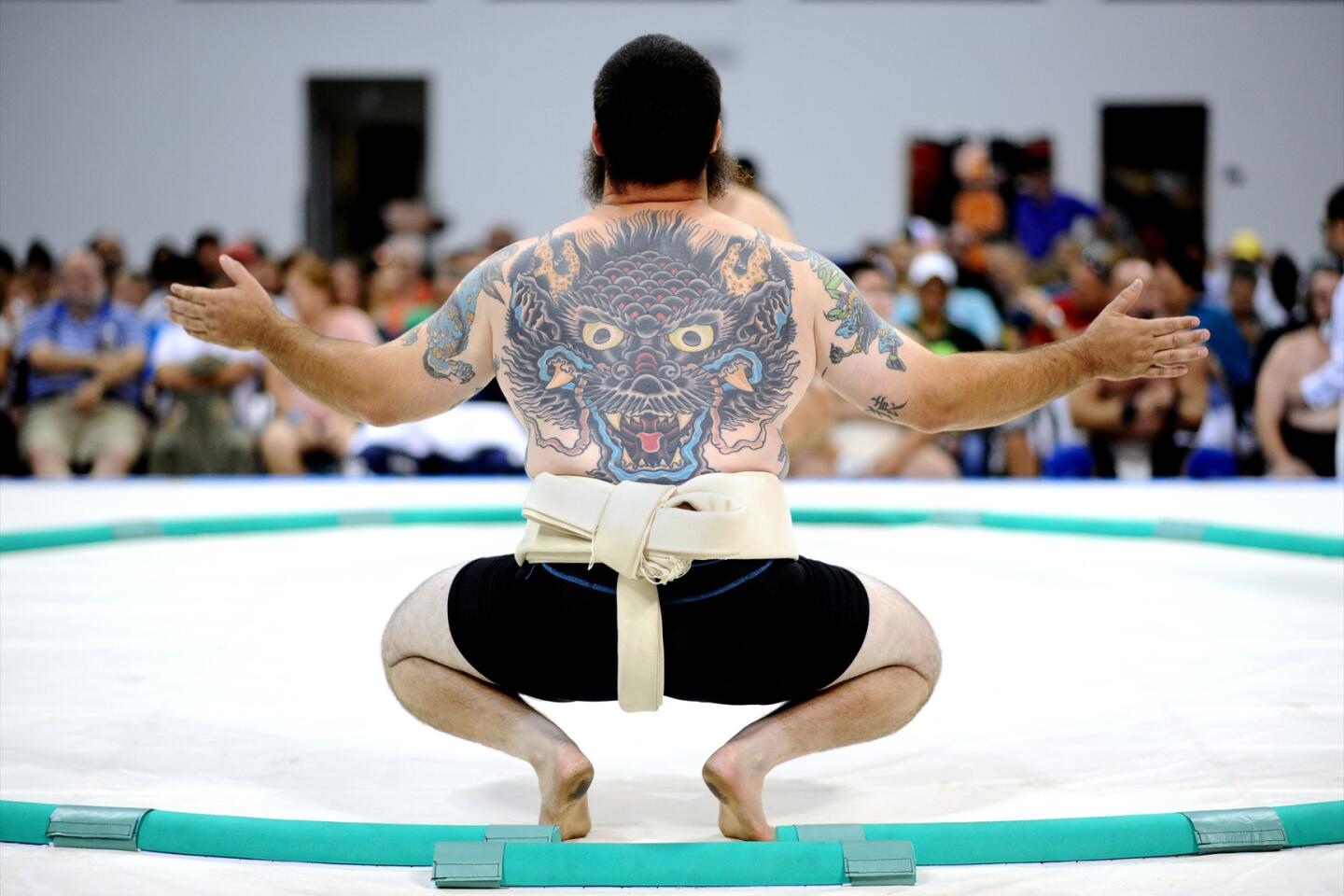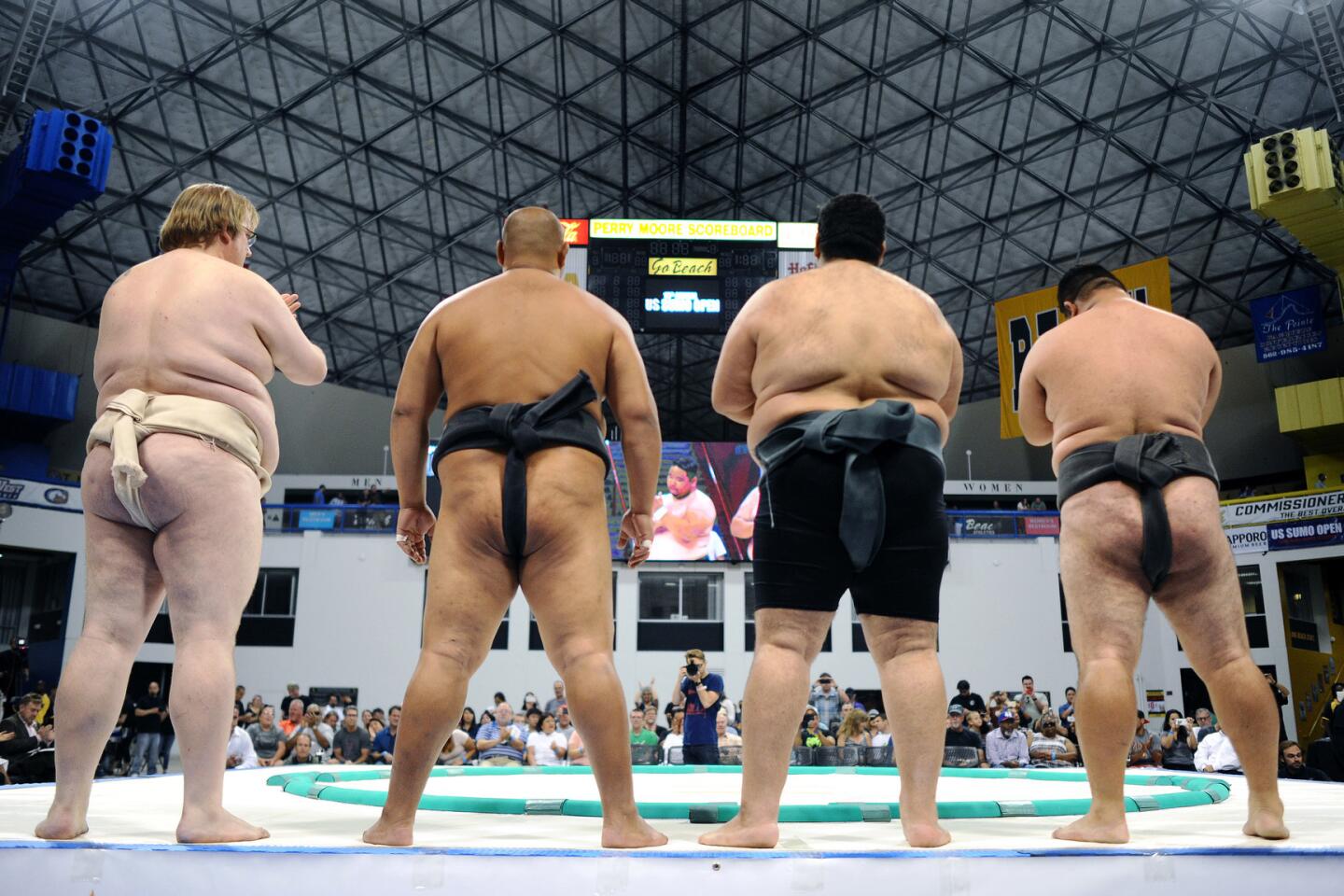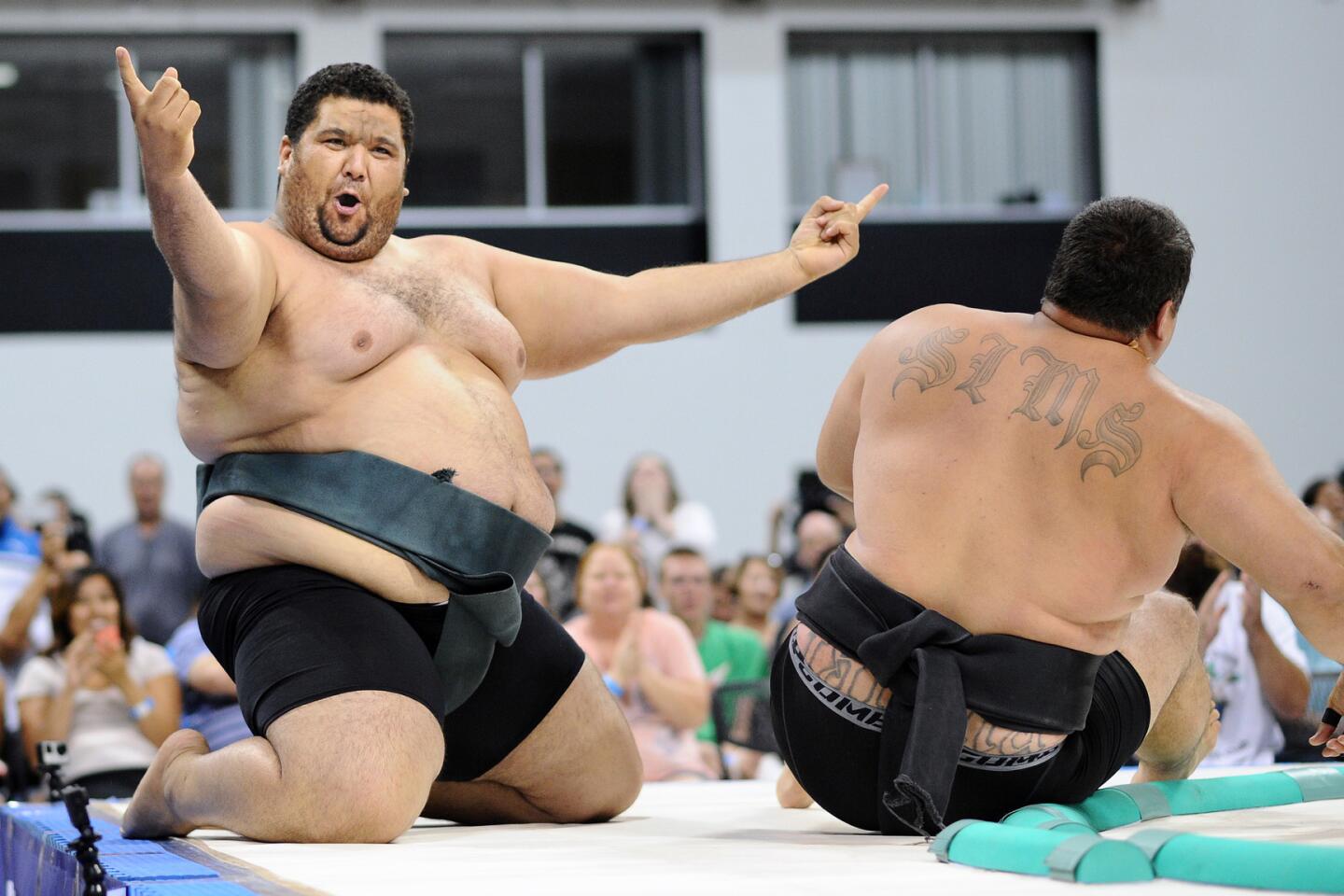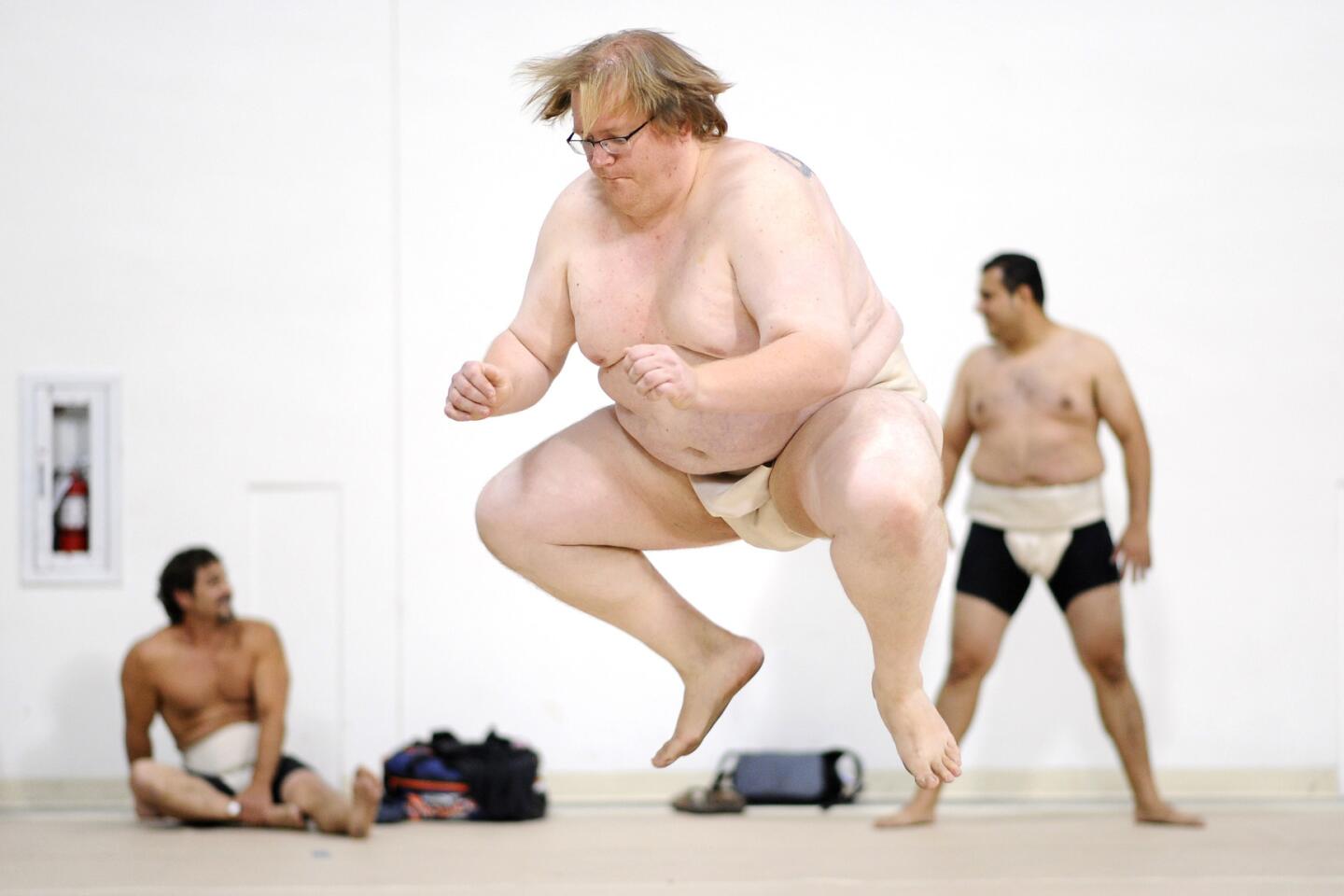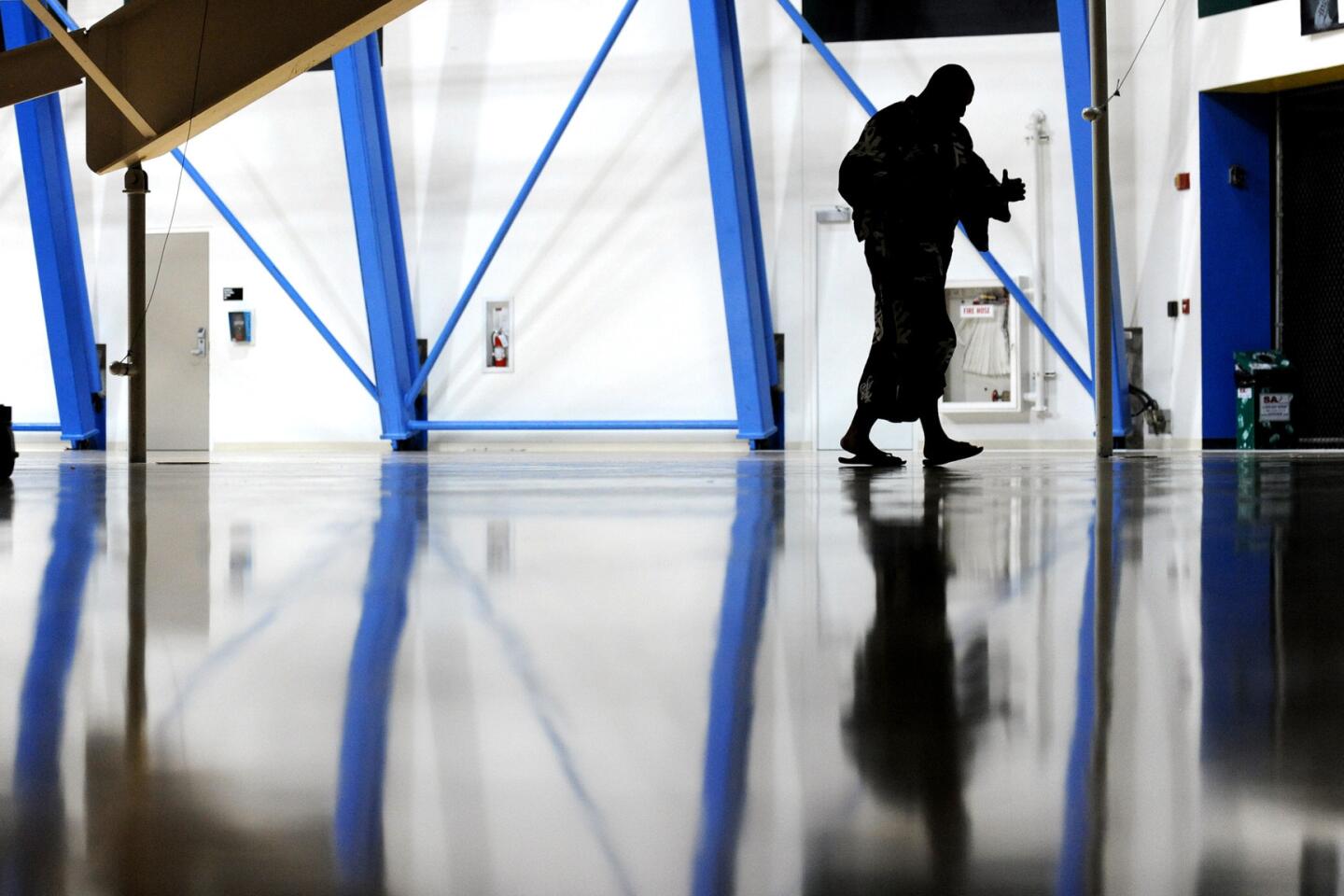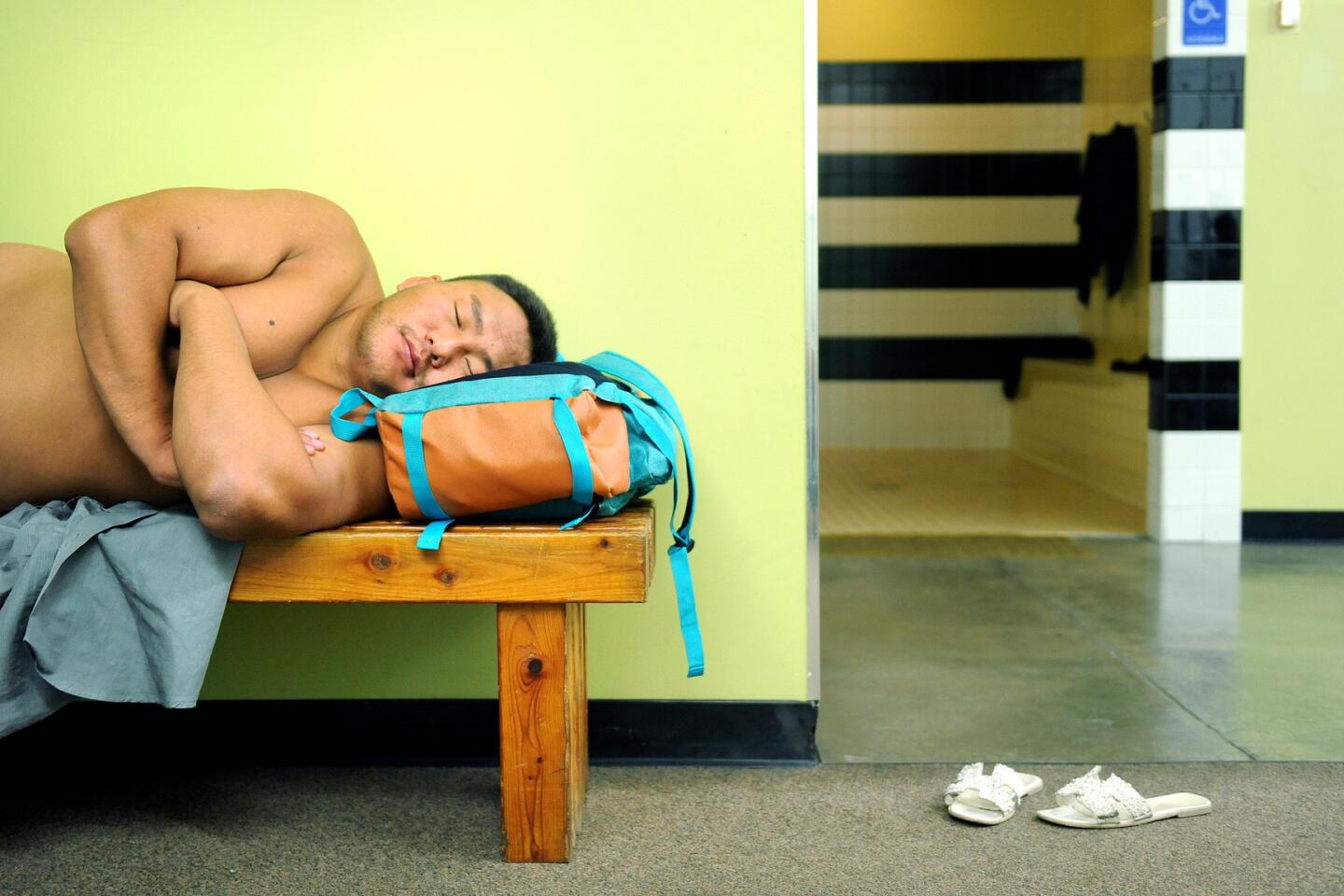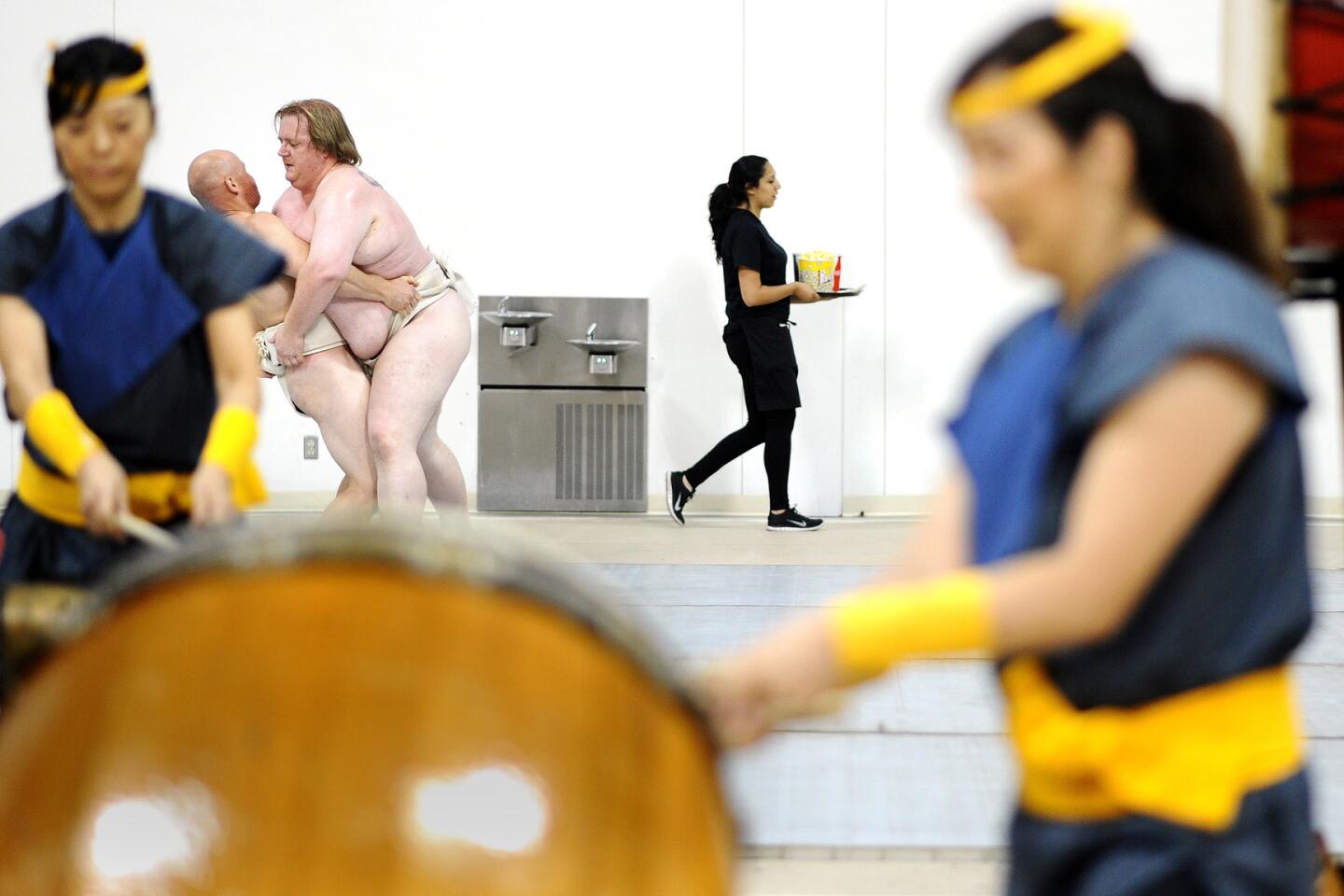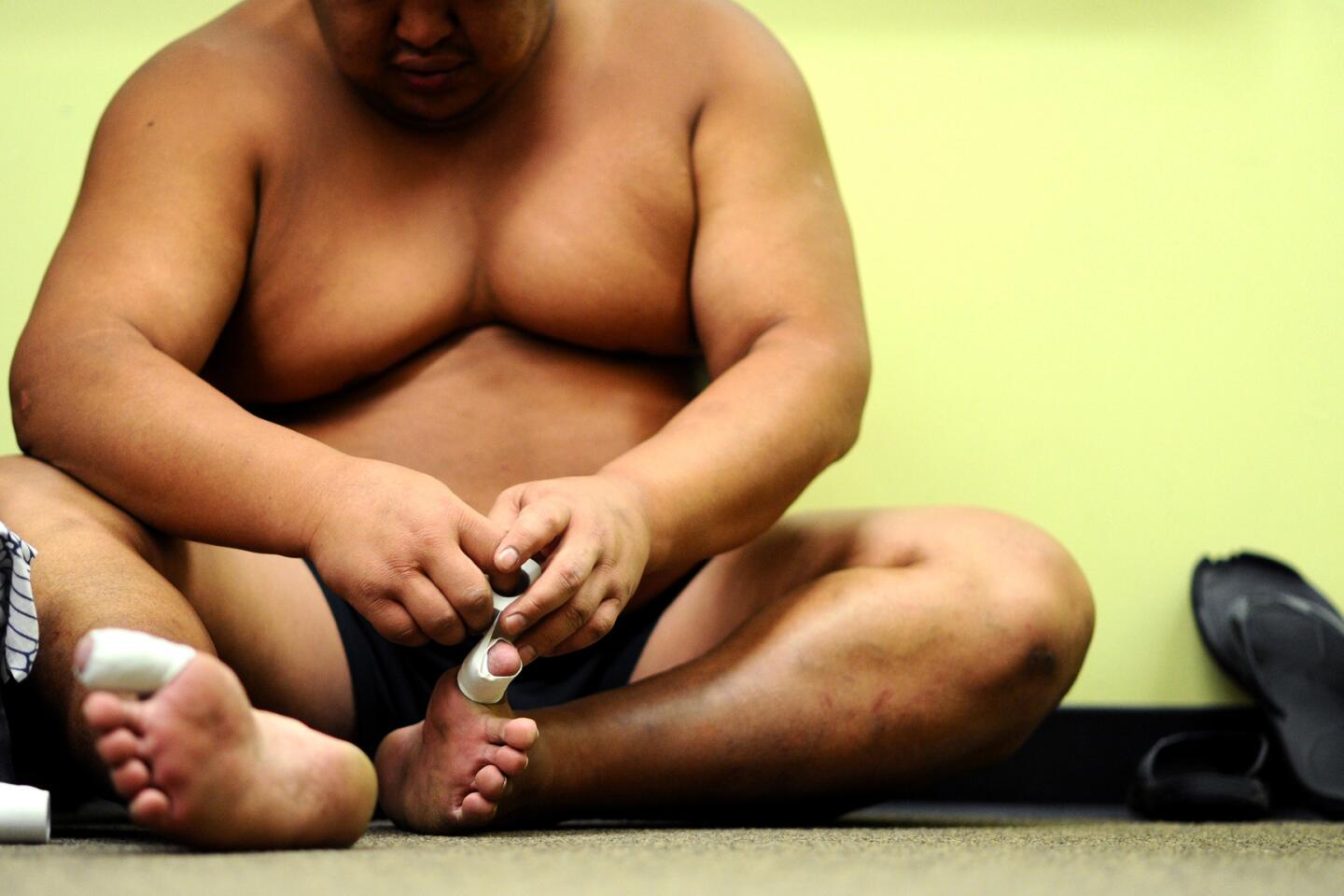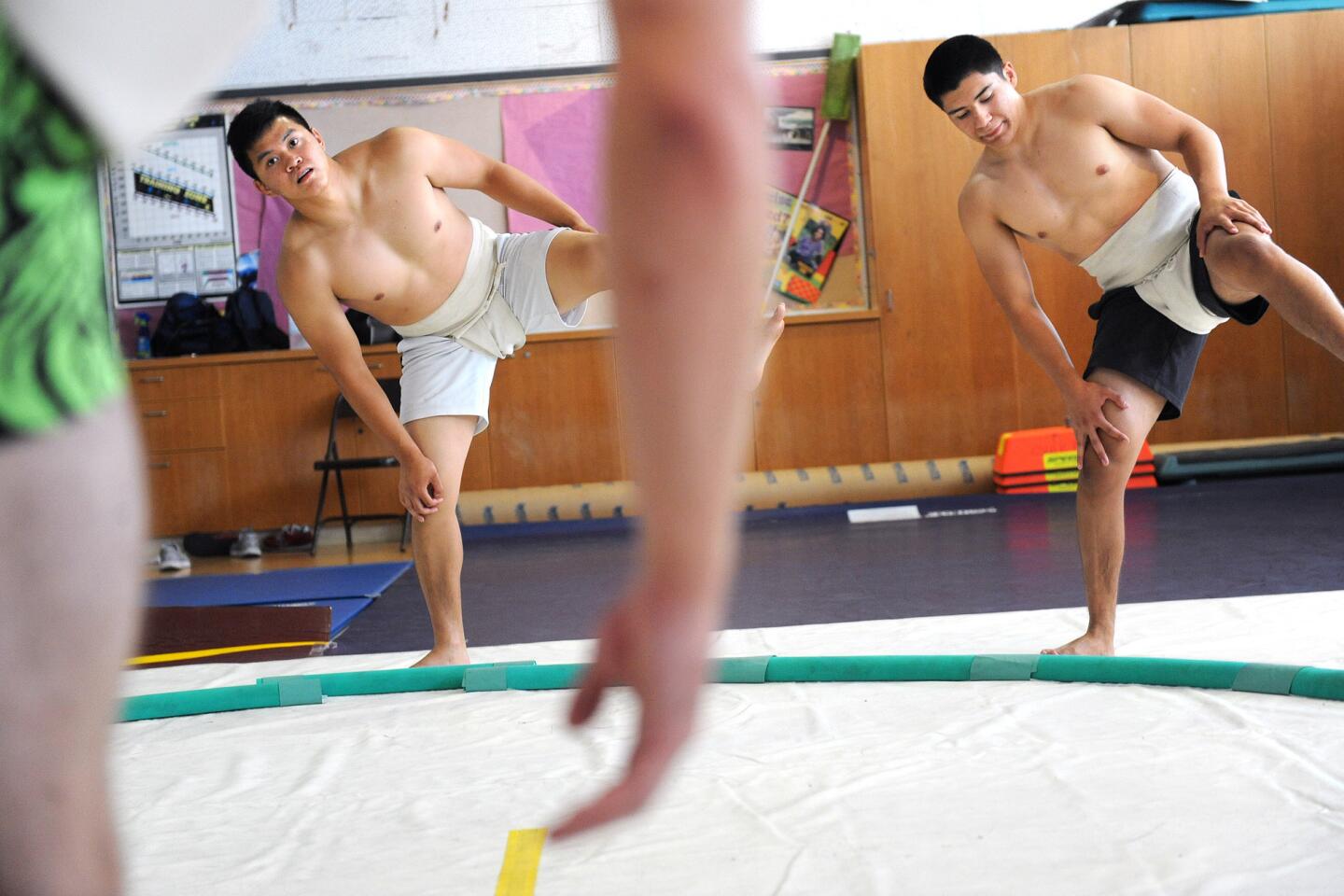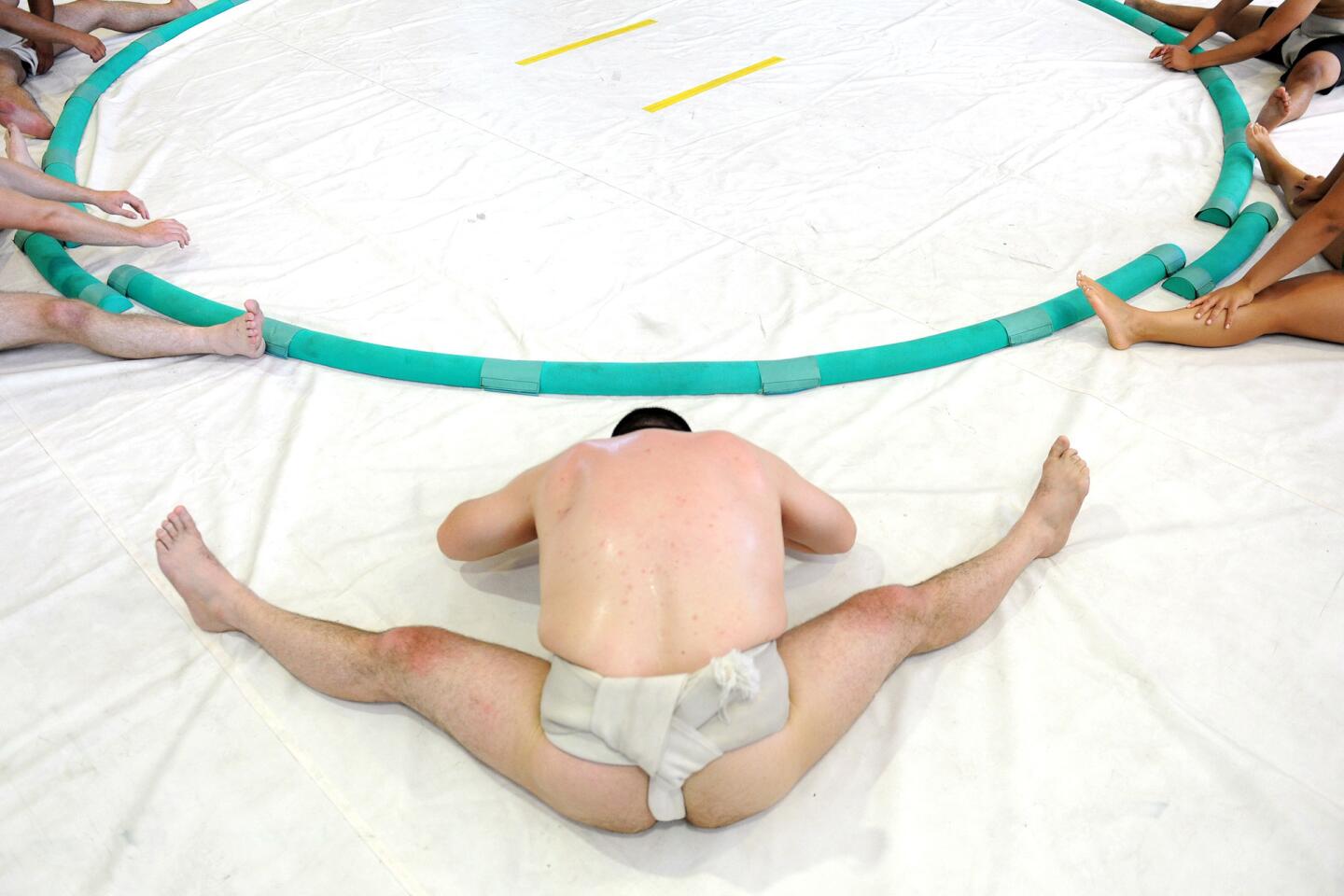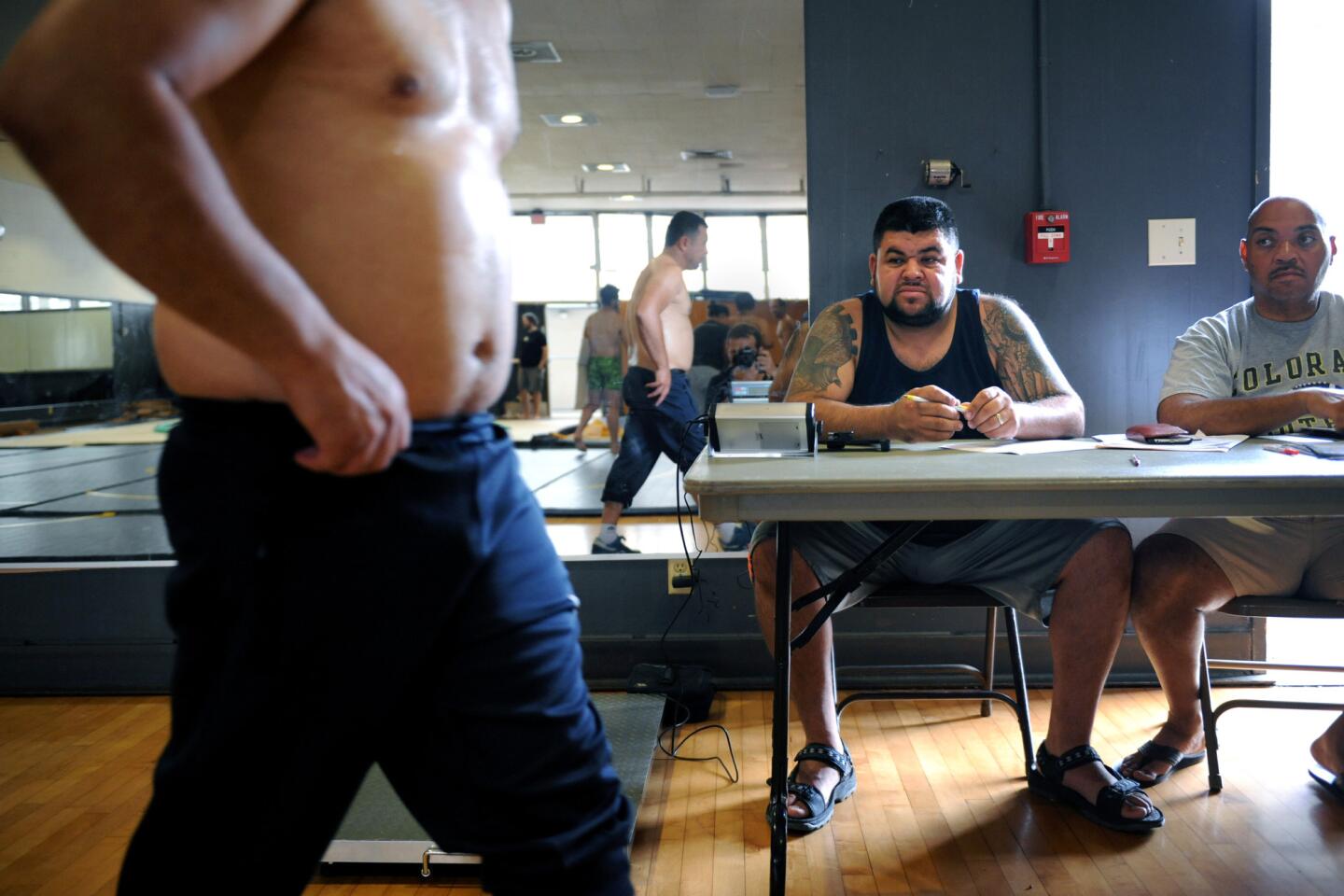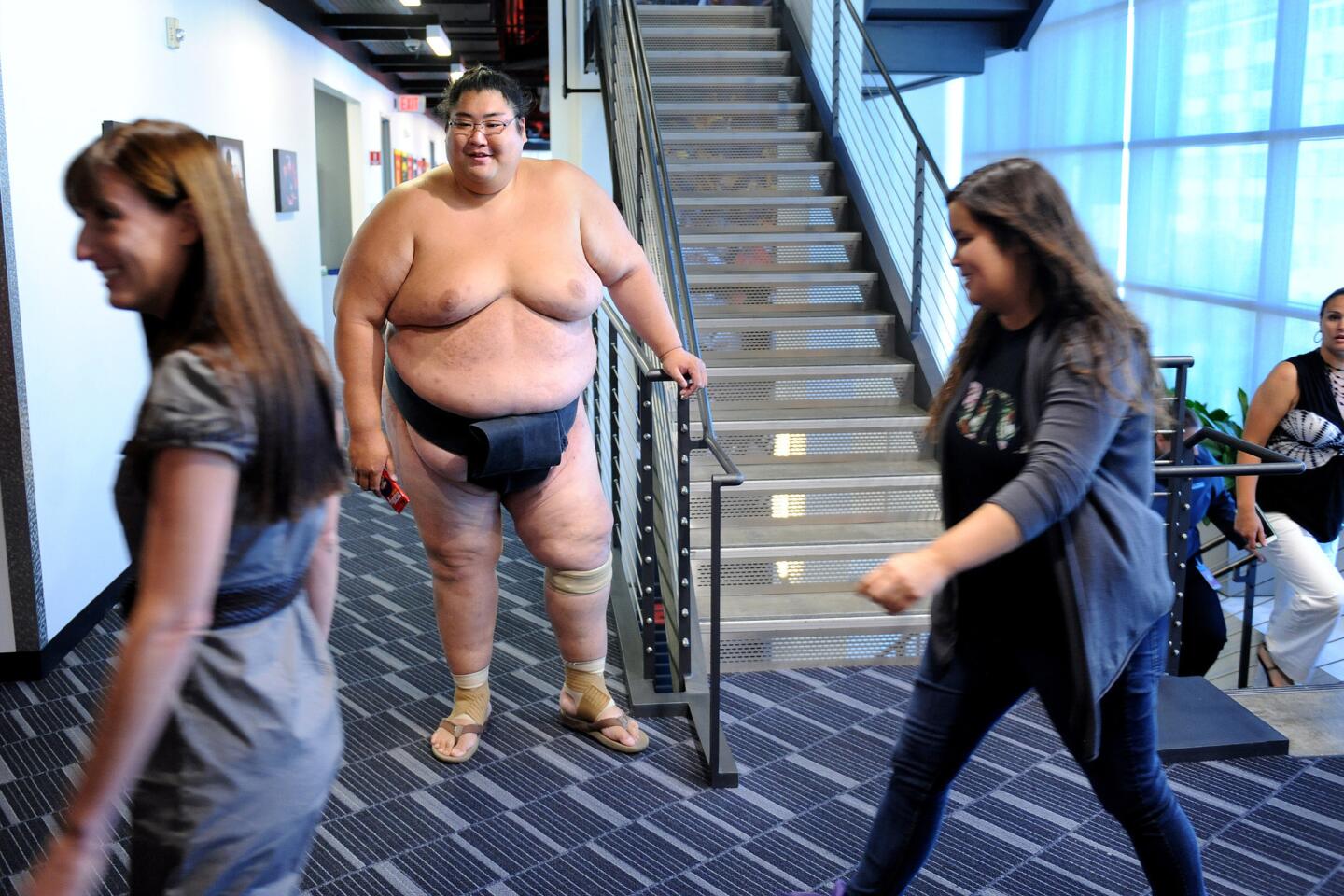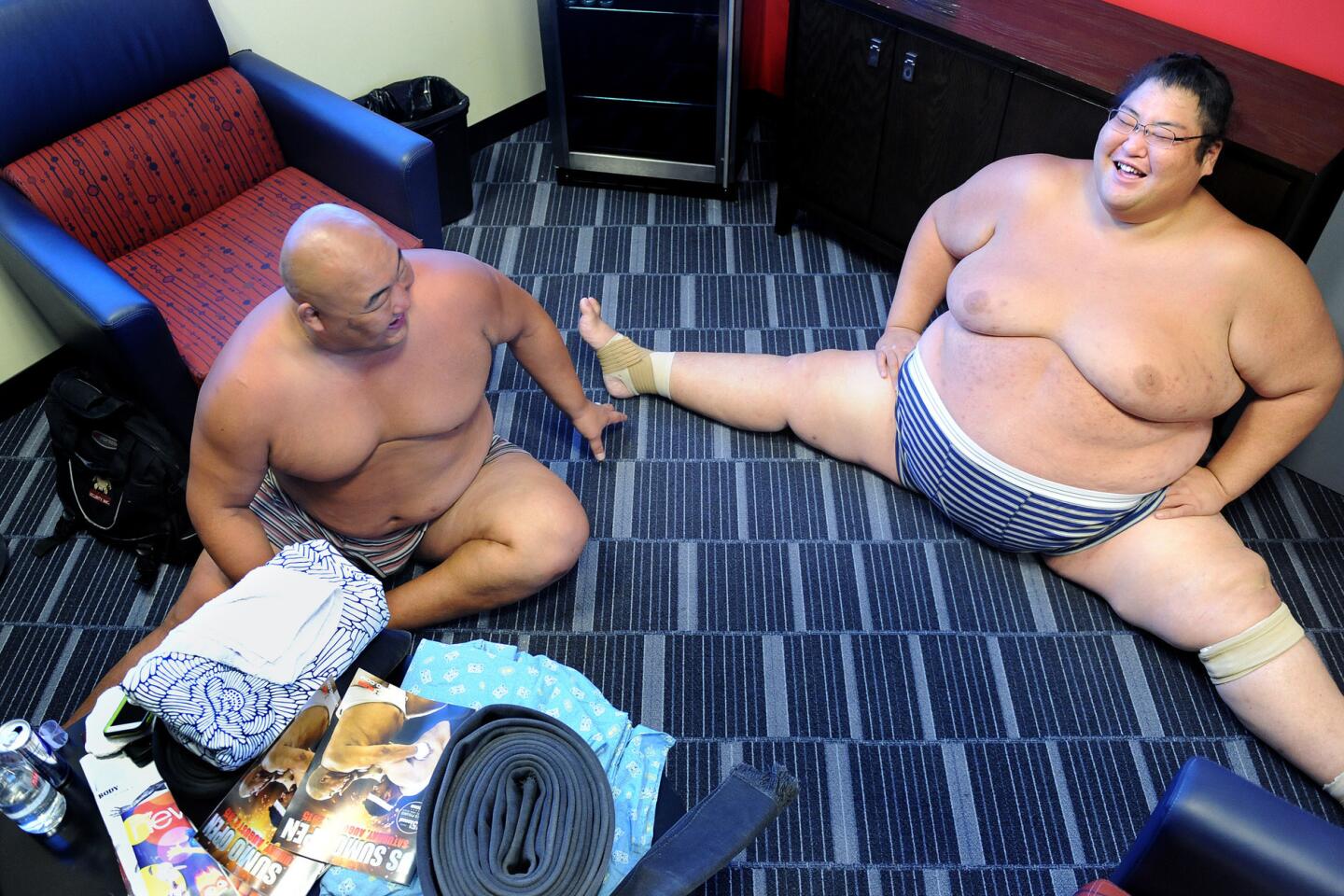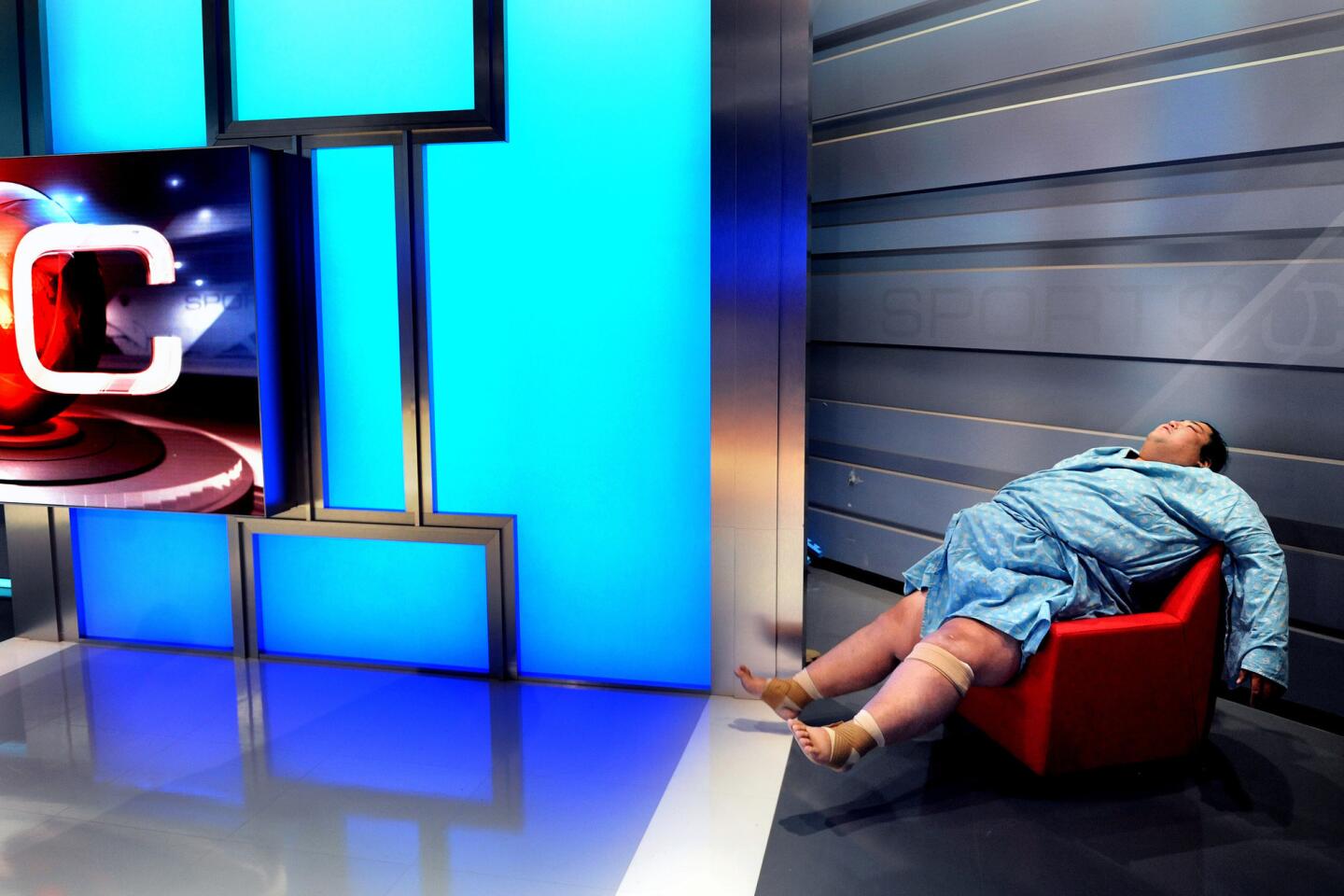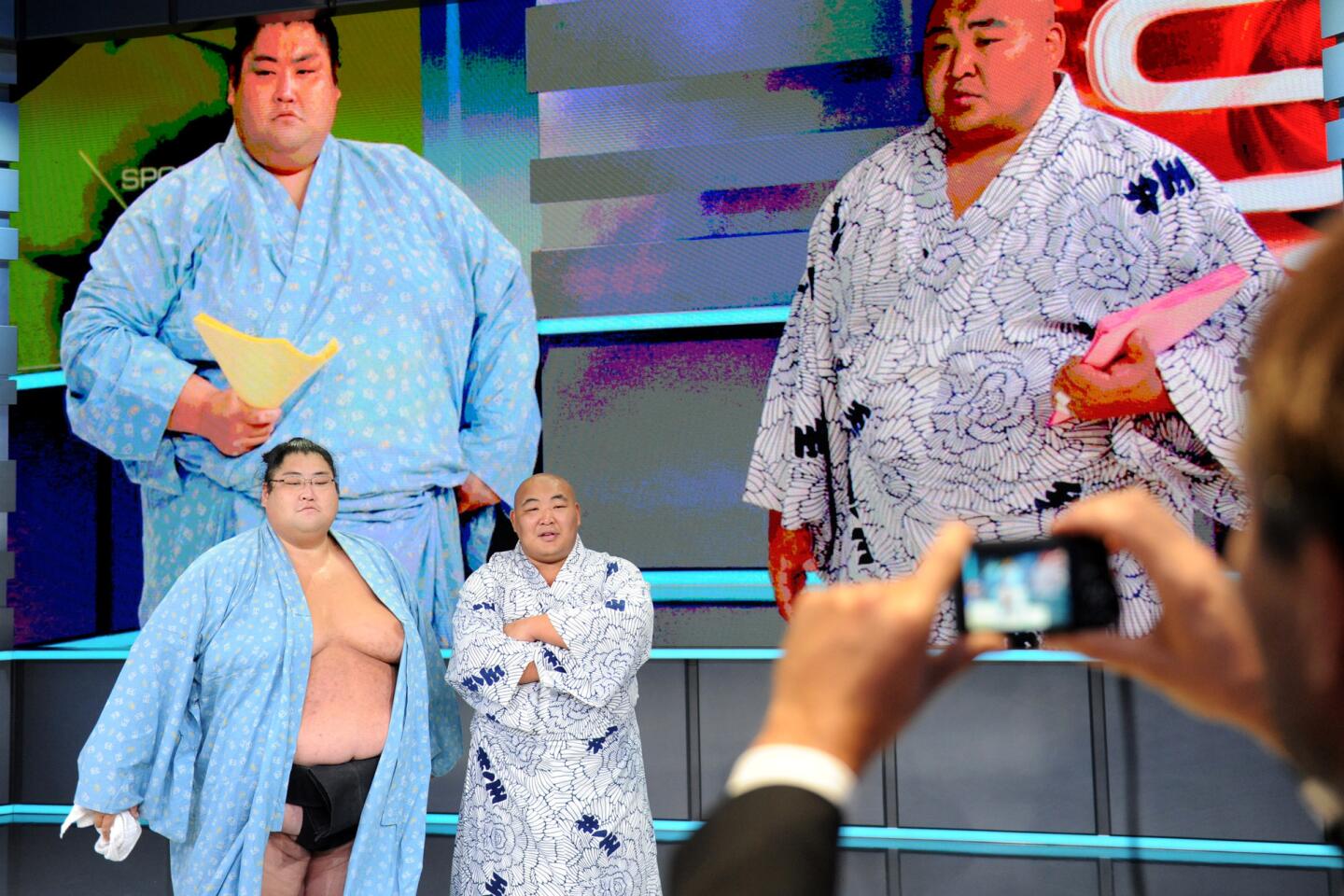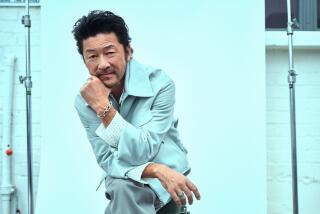Events don’t get much bigger than sumo tournament
- Share via
Welcome to Middle Girth.
There is so much to learn about sumo, an ancient endeavor performed by too-big men in too-small diapers. Not just a sport, it’s a lifestyle — with a year-round season and morning training sessions so severe that participants must skip breakfast (or risk losing it). By lunch, the wrestlers are famished, so calorically challenged that they gorge themselves on a porridge that bulks them up to prodigious, nose-guard proportions. The very best then train some more, five to six hours a day.
Purportedly, that’s not fat you see on champion sumos, it’s muscle — layer upon layer, added as if laminating a yacht. Sumos are built on a special stew called chanko-nabe —beef broth, carrots, cabbage, and a lot of other stuff you shunned as a child.
True confession: On career aptitude tests, my results always came back “sumo.” Apparently, I have the soul of a sumo. That I look splendid in a thong should not be overlooked. I also don’t like skinny people, unless you serve them with a nice honey glaze and a side of crinkle-cut fries. Even then, they’re merely an appetizer.
That is one of the misconceptions, of course, about sumo. This 1,500-year-old sport is not just for giants. At Saturday’s U.S. Open, at the Pyramid at Long Beach State, you’ll see sumos of all sizes, some as slight as 175 pounds. There will be women too, in three weight classes. Half the competitors will be Americans. The U.S. wrestlers will get their jocks handed to them. But they will learn from some of the best in the world, in what organizer Andrew Freund says is the biggest annual sumo event outside Japan.
And there will be giants, many of them Mongolians, who have come to dominate Japan’s pro circuit in the last decade or so, including two grand champions, Asashoryu and Hakuho. There are also some promising sumo athletes from Russia and Eastern Europe, who have helped grow the sport globally.
Still, never count out the Mongolians, who have won almost 70% of the gold at the U.S. Open the past 14 years. As a wagering rule, you rarely go wrong betting on the descendants of Genghis Khan.
Byamba is a prime example. With an overall record of 76-2, the Mongolian has won the U.S. Open heavyweight division the past eight years and is the clear favorite to repeat this year. He is built like a Maytag that contains a bag or two of concrete. At 360 pounds, he charges opponents with a fullback’s fury, then “sumo slams” them to the mat (known as a “dohyo”).
No matter where you were Tuesday, you might’ve felt the ground quiver when sumos taped a demo for ESPN’s “SportsCenter.” Byamba attacked another renowned wrestler, Yama, 600 pounds of Kobe beef and reportedly “the biggest man in Japanese history.” In seconds, Yama was on the ground, and the floor of the downtown L.A. studio was quivering like a kettle drum. What does it take to shake a new steel-beamed studio like that? Apparently, a flying Yama.
Seems simple, sumo. To win, you either knock your opponent to the mat, or out of the 15-foot circle. Experts such as Freund say that there are more than 80 techniques to sumo, but that most competitors rely on a dozen moves. Matches are over faster than the average Hollywood marriage.
What’s legal? Slapping, leg sweeping, pulling your opponent’s mawashi (the belt).
What’s not? Punching, kicking, gouging, yanking the hair.
“I’m going as fast as I can to get inside on an opponent,” Byamba explains of the opening bull rush. “Concentration is very important.
“I get a lot of satisfaction taking a big opponent and slamming him down,” says the four-time world champ.
This is serious business, particularly in Japan. There are 700 pro sumos there, and only the top 10% really make a comfortable living at it. The rest suffer through grueling training sessions for mere room and board, often spending nights sleeping on the floor.
You can see 50 of sumo’s elite Saturday in Long Beach. Among the highlights: Byamba going for his ninth consecutive Open title, probably including a match against Kelly Gneiting, a gritty 440-pound American whom Byamba body-slammed two years ago in “the bounce heard ‘round the world.”
That’s sumo for you. Quirky, yet seismic. And not just Japanese anymore.
Twitter: @erskinetimes
More to Read
Go beyond the scoreboard
Get the latest on L.A.'s teams in the daily Sports Report newsletter.
You may occasionally receive promotional content from the Los Angeles Times.
